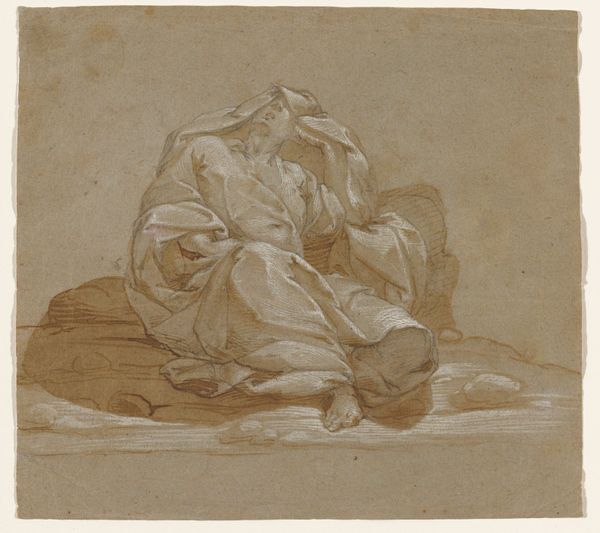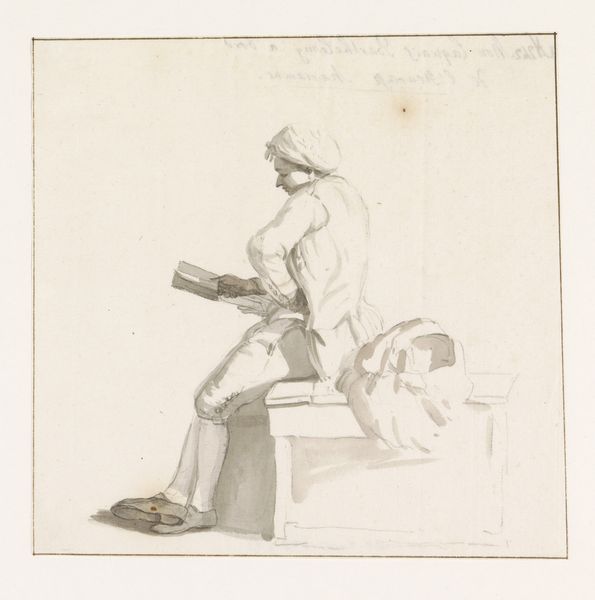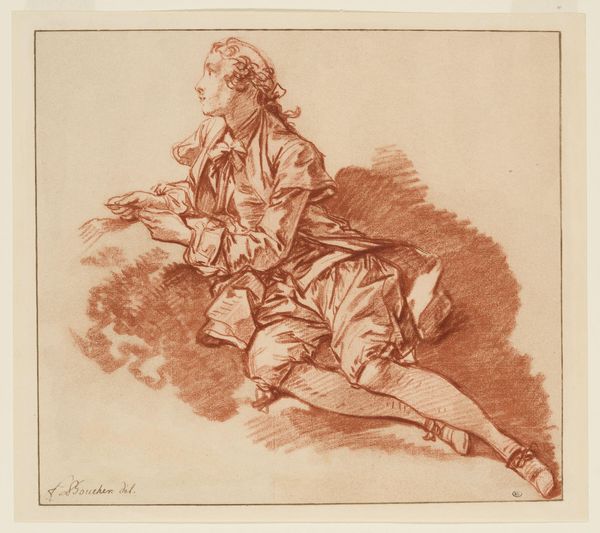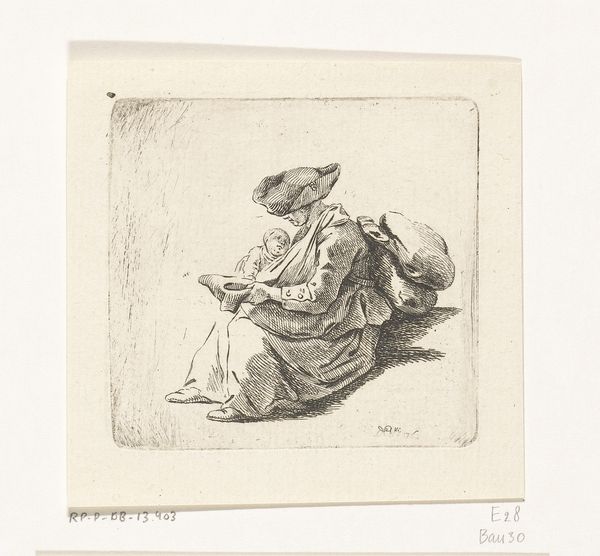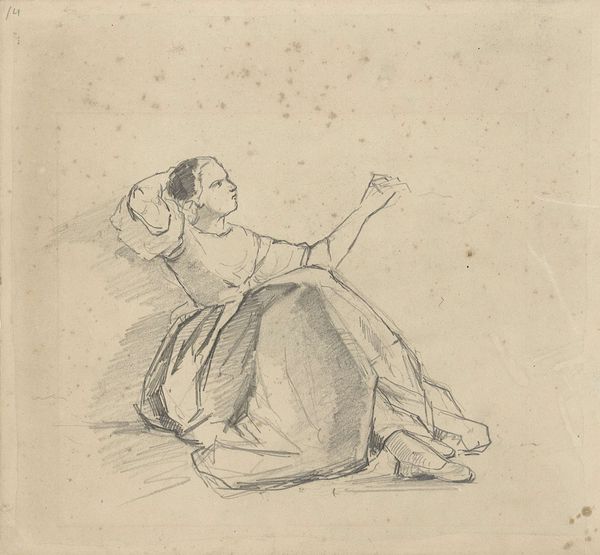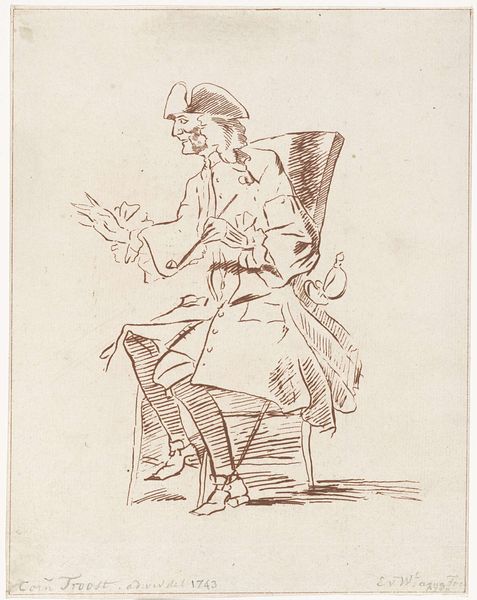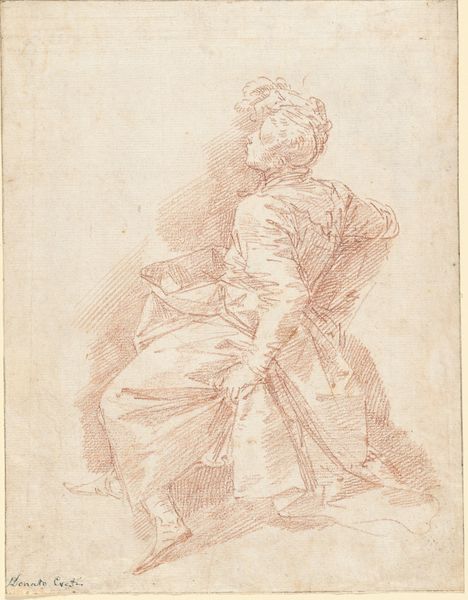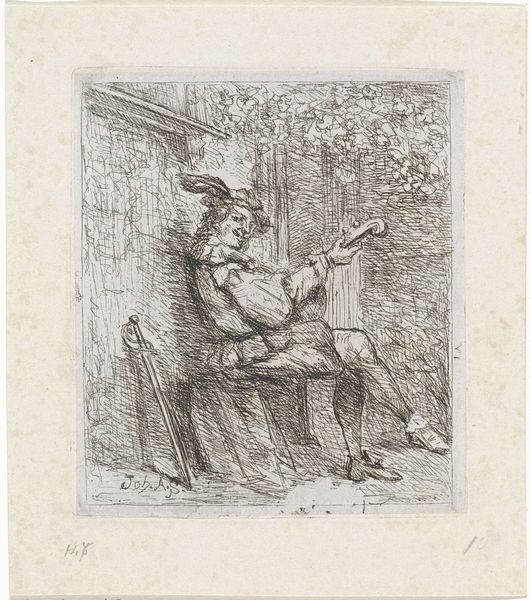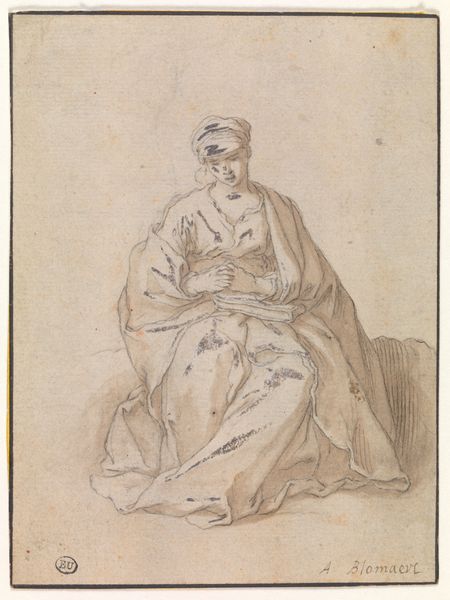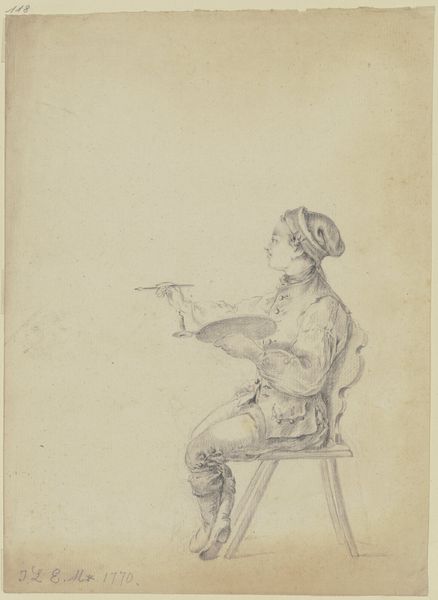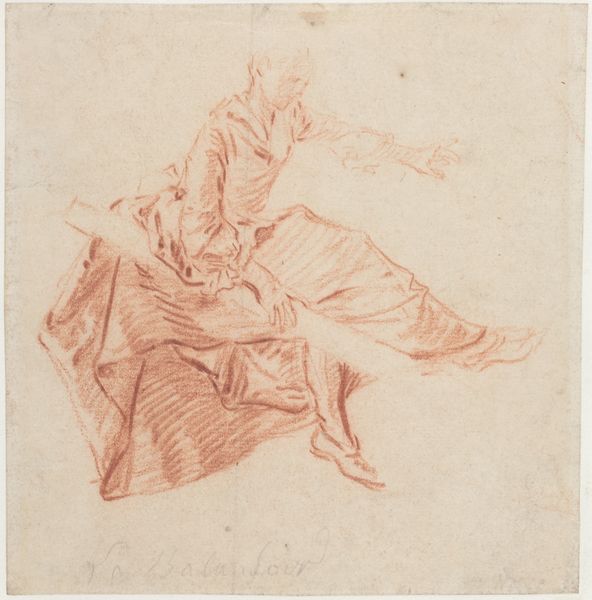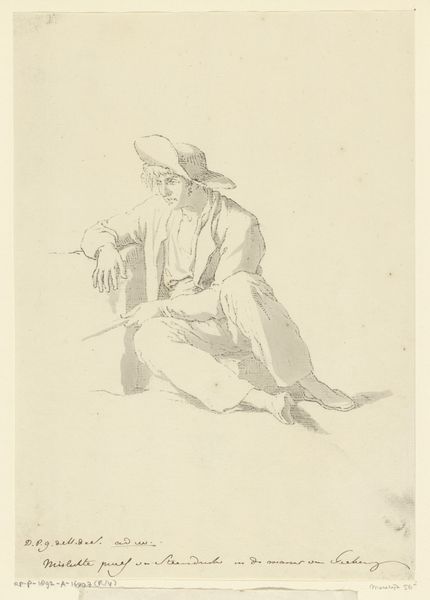
print, engraving
figuration
line
history-painting
engraving
Dimensions: 129 mm (height) x 133 mm (width) (Plademål)
This print, "Pasiphae med Minotaurus," was made by Marie Jeanne Clemens in the late 18th century. As an etching, the image began as a drawing on a prepared metal plate, likely copper. Clemens would have used a sharp needle to expose the metal, then bathed the plate in acid. The incised lines then hold ink, which is transferred to paper under pressure in a printing press. The medium gives a delicate, linear quality to the image, which depicts a scene from Greek mythology. Pasiphae, wife of King Minos, is shown holding her monstrous offspring, the Minotaur. Note how the etched lines vary in thickness, creating subtle gradations of tone and shadow. The relatively small scale of the print also invites close looking. Etchings like this one were relatively inexpensive to produce and disseminate, thus widening access to art and knowledge during the Enlightenment. In this context, the choice of representing a classical subject reflects a desire to educate and uplift the public, democratizing culture through wider distribution.
Comments
No comments
Be the first to comment and join the conversation on the ultimate creative platform.
